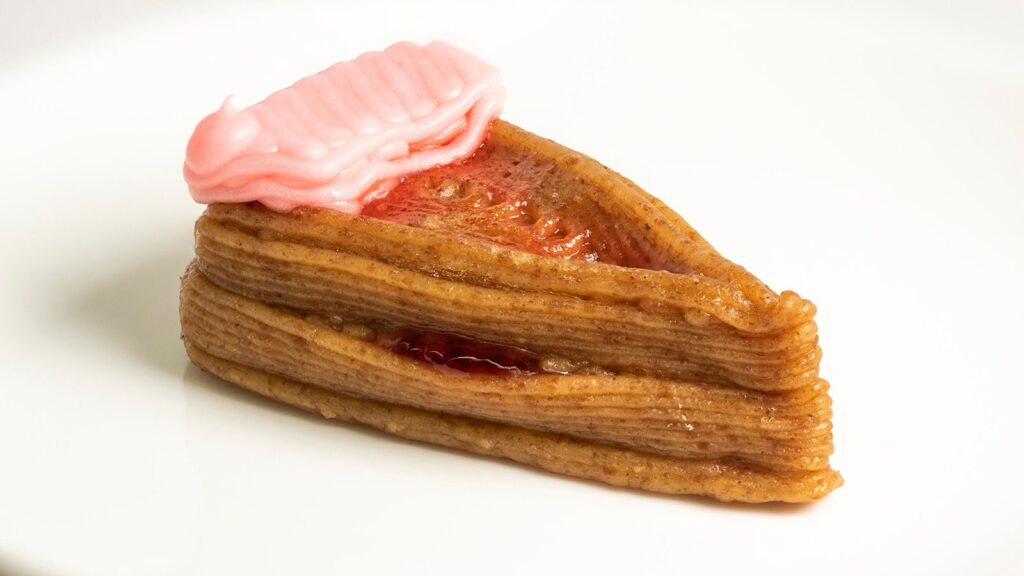Daniel Prairie
Hi everyone,
My name is Daniel Prairie, and I’m a computer science undergraduate with a minor in management. I enrolled in this class because I’m excited about the opportunity to explore 3D printing, which I’ve never tried before. I’m eager to discover how art and computer science intersect, and I believe this will be a fun and fascinating way to dive into that blend of creativity and technology, even though I wouldn’t describe myself as particularly artsy.
3D Food Printing
Article Link: 3D-food printing for healthy eating and delicious desserts | NSF – National Science Foundation
Team: Dr. Jonathan Blutinger and his team at the Creative Machine Labs at Columbia University (directed by Prof. Hod Lipson) and Prof. Christen Cooper, Pace University Nutrition and Dietetics.A
Image Source: Researchers 3D printed this cheesecake | CNN
When I was looking at some 3D printing projects, I discovered one that stood out from the usual ideas. Instead of using common materials like plastic, metal, or resin, the Creative Machines Lab at Columbia University has developed a project that uses 3D-food printing to create customized, healthy desserts, such as vegan cheesecakes. The researchers used computational methods like algorithmic design and digital modeling to experiment with different ingredients and create intricate, multi-layered desserts tailored to specific dietary needs. By applying principles similar to those in architecture, they achieved both stability and flavor harmony in their designs.
What I find most compelling about this project is how it showcases the transformative power of computational design to enhance everyday experiences, like simply enjoying a meal. The ability to personalize food at such a detailed level opens up exciting possibilities for healthier eating and nutrition tailored to individual needs. Although this technology is still emerging, I think that it’s not far-fetched to imagine a future where 3D-printed food becomes a reality.

Using 3D printing and lasers, Columbia Engineering’s Creative Machines Lab fabricated a seven-ingredient vegan cheesecake. The final iteration is shown at full scale.
Jonathan Blutinger/Columbia Engineering
Hey Daniel! I also find the other avenues of 3D printing (outside of plastics) to be very interesting. Most of them are somewhat novel, especially with food but I hope there is a future where 3D-printed foods have more of a place. One use could be with cake decorating to create custom chocolate shapes or something similar to create unique shapes without using a mold.
Hey Daniel, great to virtually meet you. I never knew 3D printed food existed. I am curious to see how far this can go, seems baking would be a great use for this technology. Especially the part where it can transform food to a person’s nutritional needs. This type of technology could have huge health impacts for everyone. It could also just have some really great cheese cake. Great post, it was cool to hear about this type of application.
I find this very neat on so many levels. I love 3-D printing with novel substances, I especially find the idea of 3-D printing a consumable like food very interesting, I’ve never even though of that. The implications of projects like this are very intriguing and I’d love to see how far something like this could go, like print on demand meals (sorta like the custom soda fountains they have at fast food places these days)
Hey Daniel! I’m excited to have a class with you this semester. Your project has really caught my attention because I love to cook. I hardly every go out to eat and usually end up cooking at least twice a day. The idea of using 3D printing on consumable food items is extremely interesting! I can see how it could be useful for a variety of things, like decorating cakes. What a yummy project!